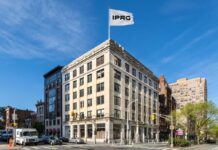Like all great art, architecture relays secrets of centuries past and offers a window into the culture and history of those who came before us. Renowned for its rich history, Jersey City’s most iconic buildings, and the people who dwelled within, provide a unique insight into how the city we’ve come to know and love has evolved over the years.
Dixon Leasing understands that every historic property contributes to Jersey City’s story. That’s why we make every effort to restore or recreate the architectural elements that make each home unique. Join us as we take a trip through history and look behind the facades of some of Jersey City’s beautiful buildings in an ongoing collaboration with Jersey Digs.

Today, we walk you through a handsome treasure trove of perfectly preserved original features with direct access to Van Vorst Park.
Welcome to 459 Jersey Avenue, a prestigious house, rich with history and chock full of original features. Built in conjunction with two neighboring brownstones 461 and 463 Jersey Avenue, this home was designed by the Clark family and showcases details that span several architectural styles. Unlike typical row house construction, this set of homes on Jersey Avenue were strategically designed with independent aesthetics. While its sisters have a width of only 15 feet, 459 Jersey is 20-feet wide and stands proud through four stories of glory and more sizable windows.
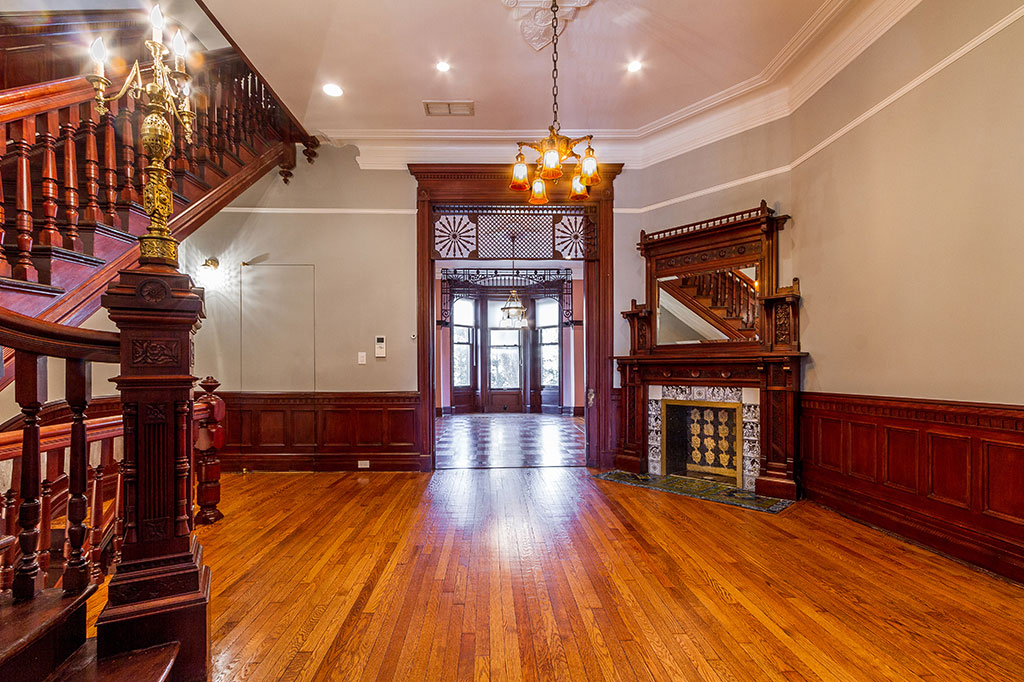
The original features of this home, namely the fireplaces, offer a clear picture into the lives of the first occupants and provide remarkable insight into how they socialized with family and friends. The level of ornamentation on each fireplace is indicative to the prominence of their locations.
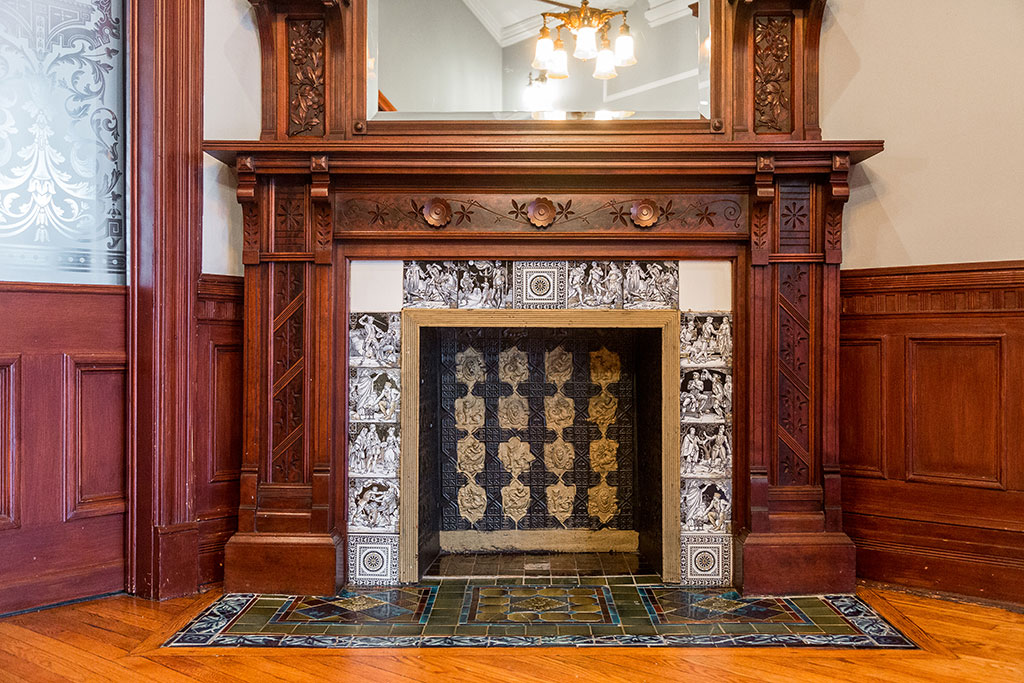
The most lavish of these is seen upon entering the grand parlor level of the home. This fireplace features exquisitely carved details that mimic those found on the exterior of the house, and presents intricate tilework showcasing scenes of knights in a black and white aesthetic. Each tile was imported from England and is part of a set of 12 designs based upon the Waverley Novels by Sir Walter Scott. Each tile is labeled with the name of the novel in the top left corner and the specific scene in the bottom right. The elaborate nature of the fireplace immediately draws the attention of all who enter and lends to the assumed wealth of the Clark family.
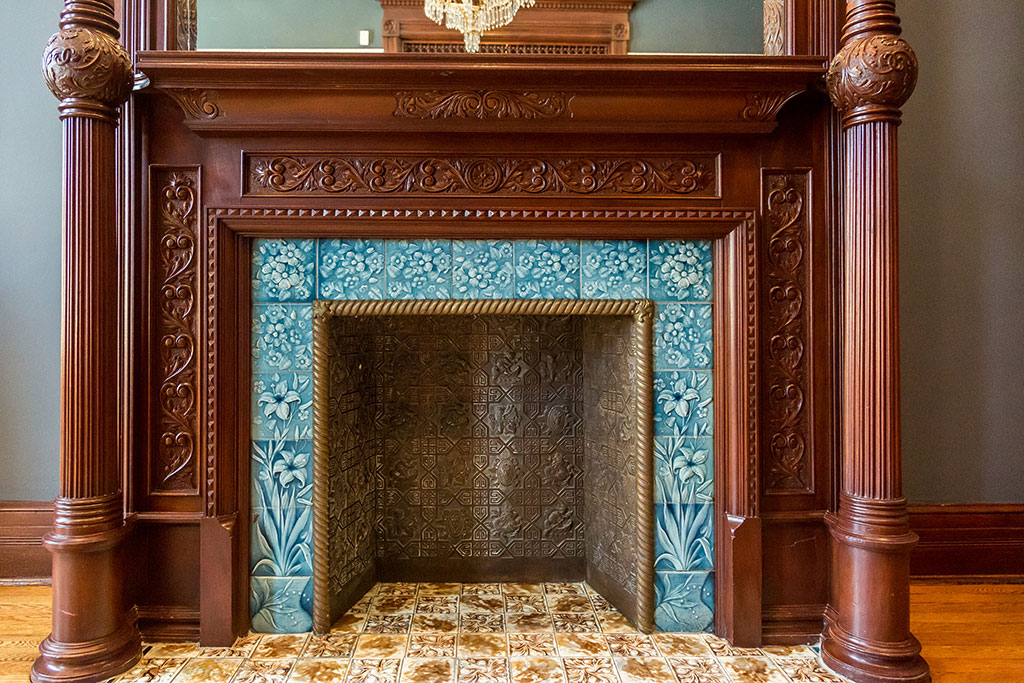
In the front room, a gorgeous second (although slightly less embellished) fireplace is found. This space would have been where the original inhabitants received and entertained guests. Therefore, it needed to be opulent enough to impress those who entered without diminishing the grand fireplace as the central focal point. Instead of a black and white backdrop, the designers added a pop of color using hues of blue. The tiles touching the floor are decorated in vases with flowers appearing to extend all the way around the fireplace as one continuous motif. These fireplaces are the only two in the house to feature tile flooring that extends into the room, thus highlighting the expense of installation.
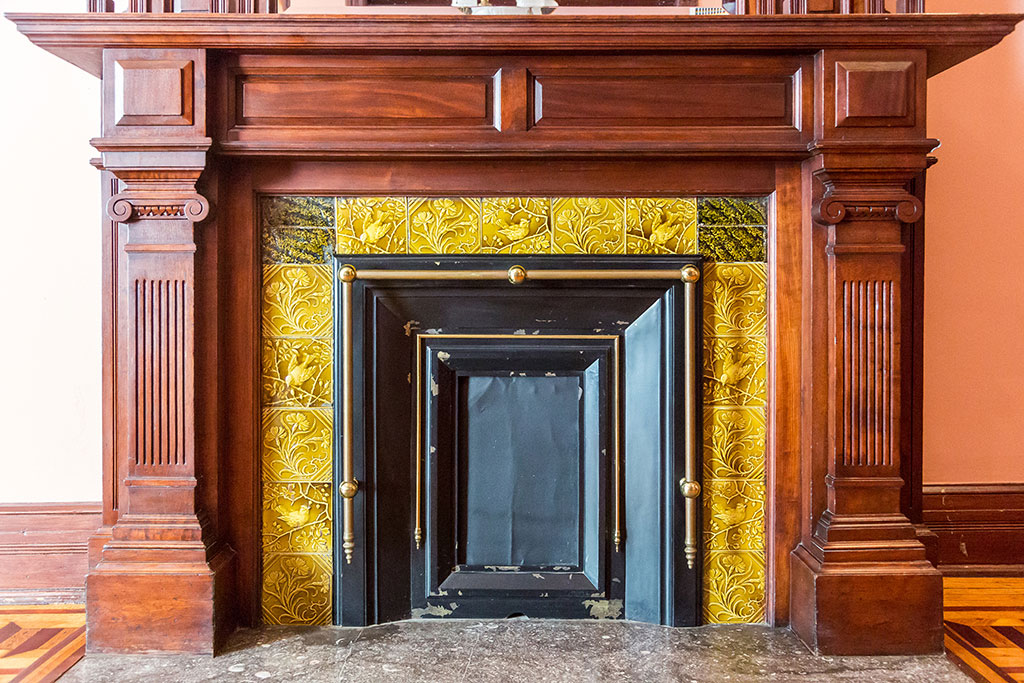
As you ascend through the home and travel from front to back, the mantels become less ornate, hinting at the different intent for each room. Those in the upper front levels feature mirrors and beautiful millwork, while those in the rear are smaller and simpler.
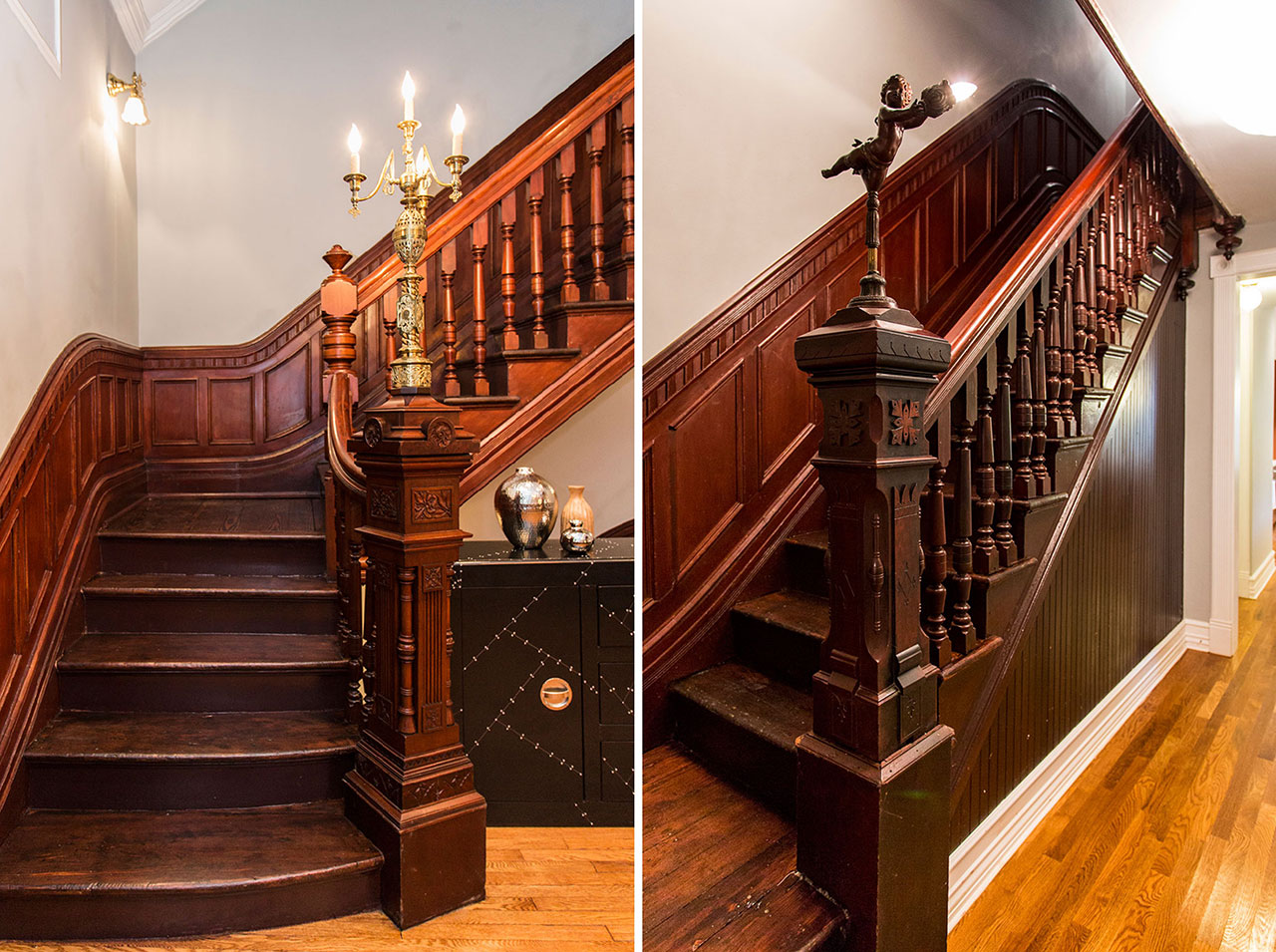
A myriad of other historic details gives us further insight into the Clark family’s taste and lifestyle. Beautiful woodwork and elegant frosted glass pocket doors adorn the lower levels of this home. The staircase’s central newel post presents hand-carved decorations and a cherub light fixture reminiscent of Renaissance art revered during the period.
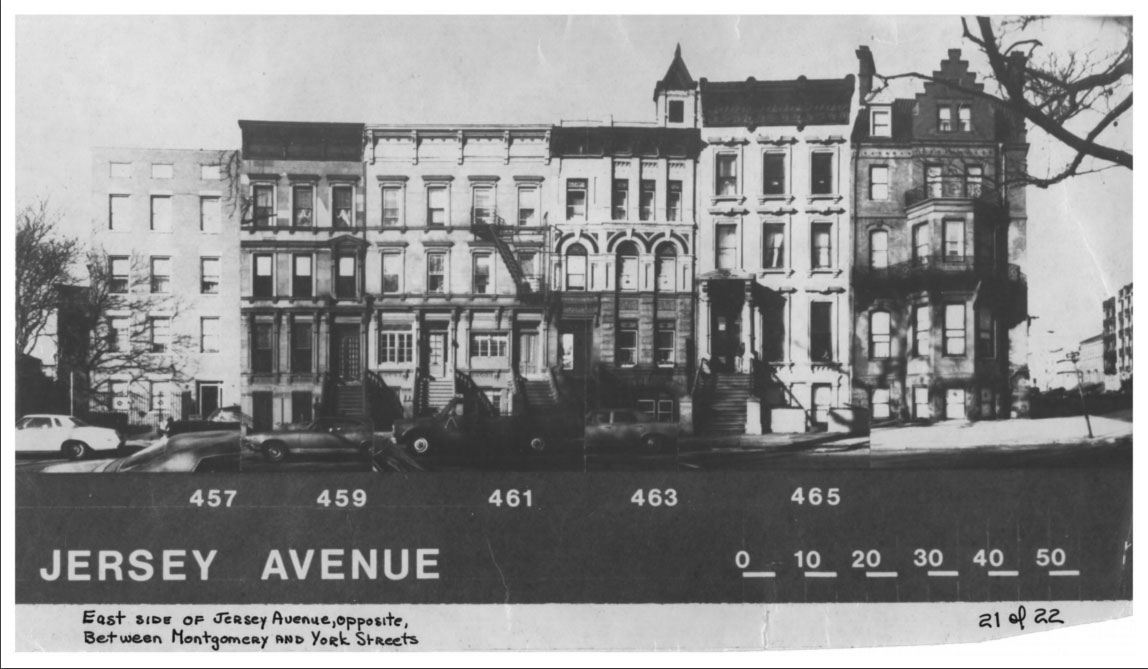 The Clark family resided in 457 Jersey Avenue during the construction of these three homes, and also owned land surrounding the park on Montgomery and Barrow Streets. During the building process, the Clark family was headed by the matriarch, Lydia, widow of Hosea Clark. Hosea amassed his wealth in the real estate industry and was actively involved in the city’s local government. As Lydia aged, she eventually deeded the property to Annie, one of her daughters. Annie was married to William Pearsall and had four children with him, all of which acquired the property upon Annie’s death in 1900. After some time, William’s shares went to his siblings who would ultimately sell off the home.
The Clark family resided in 457 Jersey Avenue during the construction of these three homes, and also owned land surrounding the park on Montgomery and Barrow Streets. During the building process, the Clark family was headed by the matriarch, Lydia, widow of Hosea Clark. Hosea amassed his wealth in the real estate industry and was actively involved in the city’s local government. As Lydia aged, she eventually deeded the property to Annie, one of her daughters. Annie was married to William Pearsall and had four children with him, all of which acquired the property upon Annie’s death in 1900. After some time, William’s shares went to his siblings who would ultimately sell off the home.
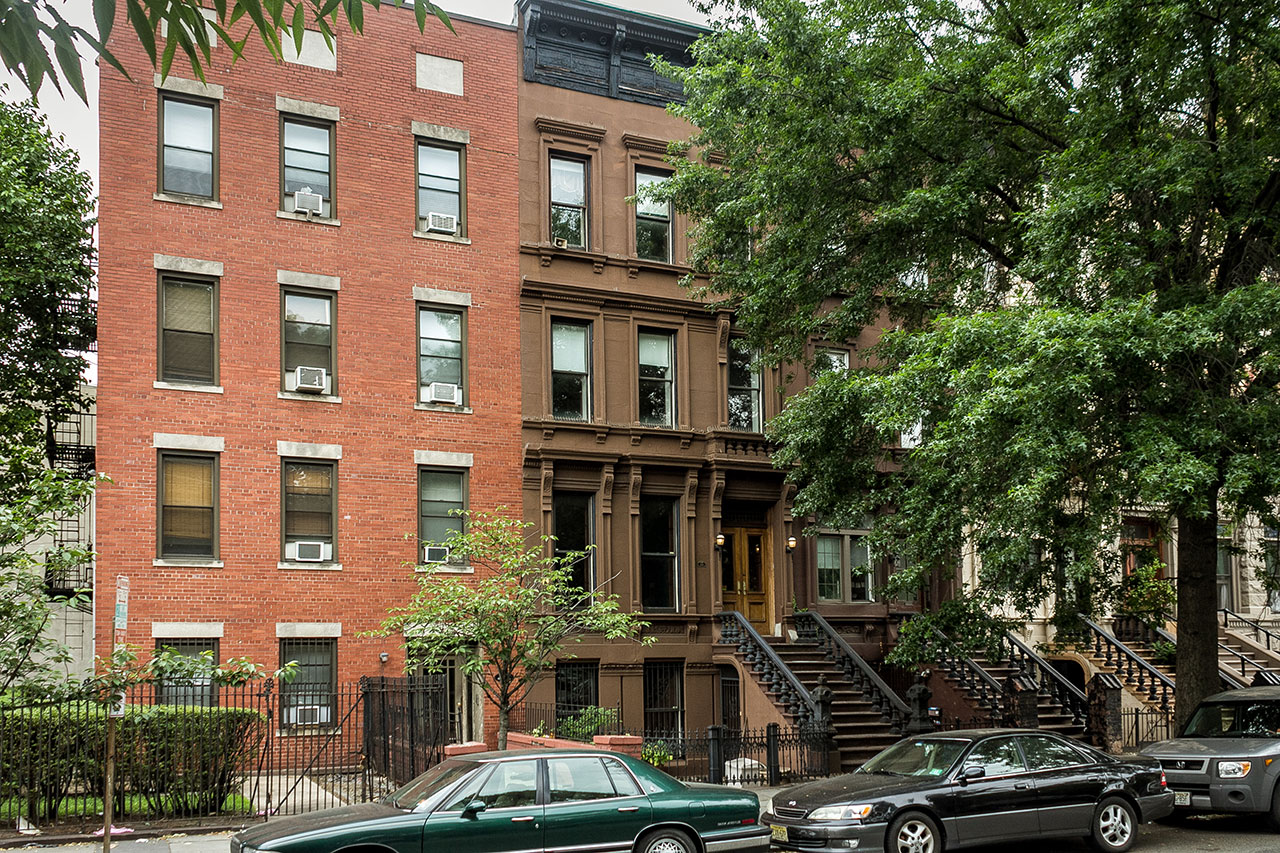
Throughout subsequent decades, 459 Jersey Avenue housed many occupants and was, at one time, a full-service boarding house under the name “Warren House.” At one point, there were 16 boarders residing in the home, each with different backgrounds and stories. Eventually, the Rock family acquired the property and returned it to its original intent of being a single-family home. Charles and Nellie Rock, along with their seven children resided here, even after all children were married. Some fifty years later, the family sold off the home to a man named Richard Usuriello who saw the massive potential in the preserved architecture. Richard showcased the property in a tour of homes where it became the recognized star due to its sheer amount of historic details.
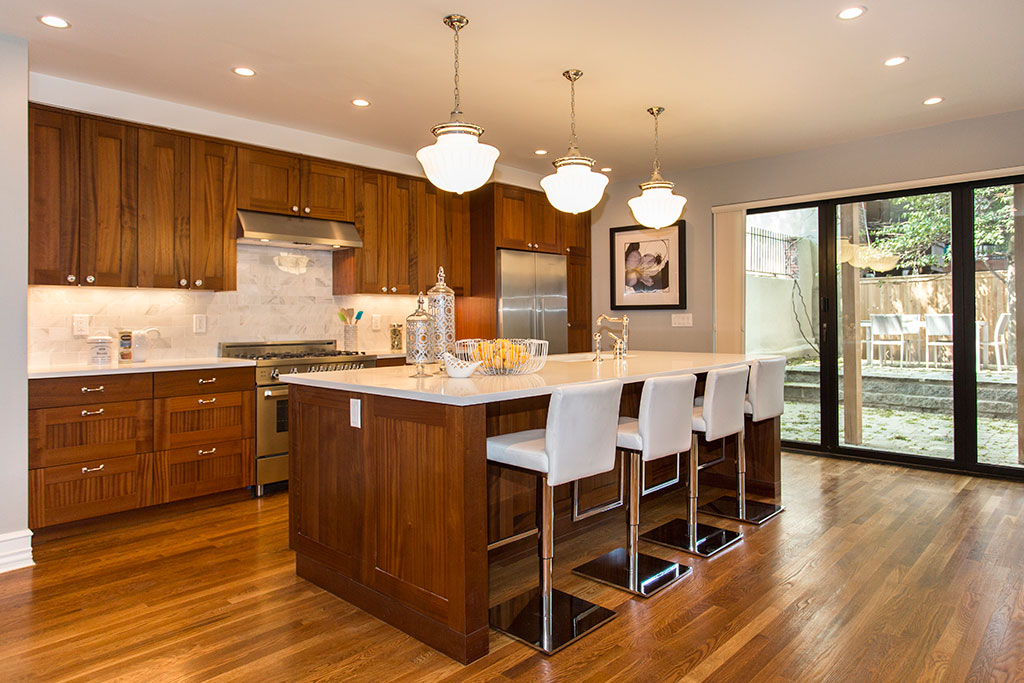
In 2014, Dixon Advisory USA purchased the home and fully restored its original grandeur while adding modern details throughout.


To learn more about this home, visit the Dixon Leasing website, or take a virtual tour here.

